Emerging Pharma Leaders 2012
Meet the rest of 2012's Emerging Pharma Leaders. Can these 15 global trend setters set the mark on their time in history?
Meet 2012's Emerging Pharma Leaders. Can these 15 global trend setters set the mark on their unique time in history—by doing better with less, making scarcity a virtue, while tapping new opportunities from science and technology to build competitive scale, globally, and across functions and markets?
That's a tall order. And this year's Leaders are advancing to the "C-suite" during arguably the toughest times the industry has ever seen. Hurdles in the search for profits include the global debt crisis; a towering patent cliff, with over $50 billion in lost revenues this year alone; harder science and a more skeptical stance on drug approvals; and a continuing massive downsizing in sales forces as marketing trends digital. Yet each of these 15 men and women, scattered on three continents, have learned from challenges, overcome obstacles, built capable teams, retained their passion for the work they do—and stayed on course. Pharm Exec spoke with them to find out what characteristics, skills, and lessons they've valued most along their journey—and whether it's through good listening skills, impeccable teamwork, or strategic leadership, each seems to have found his or her own North Star.
As we look at these upcoming leaders who are still on their journey to success, Pharm Exec decided to have a conversation with one more leader—one who has reached his destination and stayed long enough to grow from a seedling into a solid Oak with deep roots. Jurek Gruhn is US President of the diabetes-focused drug and device company Novo Nordisk. Last month, the Danish-based company experienced its 40th consecutive quarter of double-digit growth. In April, it announced plans for a 15 percent expansion of its US workforce. Take a look at the staff downsizing, war of attrition M&As, R&D budget cuts, and dwindling pipelines of much of the industry and you can't help but ask, "What's their secret?"
For starters, says Gruhn, a long history (89 years to date) and a focused specialization in one therapeutic market are key factors in Novo's success. "Approximately 80 percent of our efforts go into diabetes, specifically into therapeutic proteins within diabetes. We know left, right, and center, the needs of patients with diabetes," he says. "I know patient centricity sounds like a cliché and everyone is talking about it, but I've been with this company for 16 years, and the patient has always been at the center of all our activities—we know how to satisfy their needs, regardless of where we do business."
It follows that the best way to understand the patient is to be involved in the care community. Says Gruhn, "volunteerism is a big focus for our employees, and something we definitely encourage. Our employees take part, in their own spare time—without any pressure from us—in many different activities associated with diabetes, such as camp programs and charity events. When you are this close to your customers, if tough times arise, then you know instinctively the reason you are with the company—you don't need to be told."
The group dynamic of the Novo team is also critical, Gruhn told Pharm Exec. That dynamic is built on a commitment to diversity and an equal opportunity for access and to be heard. "I direct a team of only 11 people. We have four different nationalities, three women, and an age range from the 30s to the 60s. We value diversity," he says. "And the team is able to speak up—that's one of the key capabilities of any emerging leader, in my mind. We talk. We argue. We discuss. If people are able to fight for their opinion, argue professionally, and then come to a common conclusion and implement it as one team, then that team is going to be successful." The point is clear: the hoary bromides of the famous poem Invictus—I am the master of my fate—is no match for the pure simplicity of mutual trust.
—Jennifer Ringler
David Ford
Head of North American Human Resource Operations, Sanofi
Are there parallels between milk and medicine? To David Ford, a native New Zealander who now runs Sanofi's North America human resources operations but spent his early career working for his home country's Dairy Board, the answer is a qualified yes. Both industries are global, vertically integrated, customer oriented, closely regulated and—at least for most—an essential good. The big difference is that pharma earns its profits by saving lives. "What attracted me to this industry is that the metric of success is simple: bringing medical science forward to improve the state of health."

What Ford may not have anticipated when he joined the former Sanofi-Synthelabo in 2002 after completing an MBA at INSEAD is the pace of industry consolidation. Since then, his company has merged with another global Big Pharma player, Aventis, and absorbed multiple smaller businesses. The new Sanofi is today the world's third largest drug company by revenue, with one of the most diversified asset portfolios.
The transition to new business models has upended many of the old assumptions that talent and learning are fixed and finite. Market churn has created rich opportunities for those with transferable skills and an appetite for risk, but it has also exacted a human toll for those reared in a culture of predictable returns and lifetime employment. "The real challenge for the industry today is adjusting to an era where growth is not a given. My first years at Sanofi Synthelabo, as human resources director in the UK, coincided with the peak sales period of a breakthrough product, Plavix. My task then was to rally, recruit, and build, while today it's about rethinking our talent base and finding not more people but the right people."
In 2005, Ford moved from the United Kingdom to join the senior management ranks of the merged Sanofi-Aventis, as human resources VP for the company's global pharmaceutical operations. It was a pivotal time as the merged company needed to consolidate and restructure its combined country operations. Here Ford learned the vital role that country managers play in a global business—if you can't execute well locally then the best corporate strategy is little more than a door stop.
In 2009, Ford was asked by new CEO Chris Viehbacher to serve as global project leader for "transforming talent." This was a signature issue for Viehbacher, linked to his strategy of creating a diversified enterprise with footprints in virtually all sectors of healthcare: drugs, innovative and non-branded; vaccines; OTC; and veterinary. To accomplish this goal, Viehbacher knew the company would require a different kind of leader, one that could collaborate across business lines, establish strong internal and external networks, and be open to different management cultures and points of view—all the while maintaining a keen focus on company priorities and executing for results.
"I was responsible for developing a talent agenda to advance the company's vision around diversification, one where one business would not dominate the others," said Ford. "We redesigned our performance evaluation and reward structure to move away from command-and-control management and replaced it with training and incentives to promote collaboration, networking, and people development." Emphasis was placed on identifying promising managers from all functions and geographies and then supplementing their progress with assignments that took them out of their comfort zones and allowed for exposure to other business segments. One of Ford's achievements was the establishment of a China Talent Center to get out in front of the competition through closer liaison with all sources of local talent, giving Sanofi first dibs in attracting new staff to counter the impact of a high attrition rate, particularly on the detailing side. The approach is now being adapted in other emerging markets.
Here in the United States, Ford is pursuing much the same goal, to complete the HR integration of three major recent acquisitions: the Merial animal health business; Chattem, a maker of OTCs; and, most recently, the biotechnology giant Genzyme. "Critical to the success of these acquisitions is looking at the talent base and to create a sense of excitement and opportunity. We need to move toward standardization and harmonization, while still having some flexibility among the constituent parts."
What advice does Ford have for young pharma managers? He cites three attributes essential to progress. First is the willingness to take on change—there are no fixed rules; complexity and context is all. Second, distill that complexity into priorities understood by those who work with you. Third, be a good communicator. "Clarity of thought is a prize in every situation but especially when your mandate is global."
—William Looney
Rick Fair
Vice President, Sales and Marketing, Oral Oncolytics, Genentech
Rick Fair began his marketing career at PepsiCo, first as an analyst and then in corporate strategic planning. During the latter part of his tenure at PepsiCo, Fair's grandmother died.
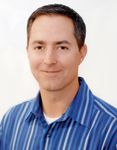
"She had a rash of medical issues, rheumatoid arthritis, Alzheimer's disease, cardiovascular disease. She was a bit of train wreck, medically," says Fair. The loss led to what Fair calls his "early mid-life crisis," and a reflection on his career and goals. "I didn't think I could spend the next 30 years selling snack chips and soft drinks, and I thought that maybe there was something I could do in business that would be more meaningful," says Fair. "My mother had been a nurse, and I had a great appreciation for the healthcare world, so I decided that I would try that out."
After a search, Fair landed a job with J&J, where he bounced around several of J&J's operating companies in various managed care and marketing roles, before leaving to join Genentech in 2006. Since then, Fair has climbed upward, from director to senior director of sales and marketing, to his current position as vice president, sales and marketing, oral oncolytics.
Much has been made about the gap between what marketers do in consumer package goods versus what they do (or don't do) in pharmaceutical marketing, in terms of engaging customers, but Fair says that's because there's a fundamental difference between a pill and a popsicle. "You're dealing, without being dramatic, in life or death when you're talking about drugs. You're not when you're talking about Doritos."
In his current role, Fair leads the commercial organization for Genentech's oral oncolytics franchise, which includes four currently marketed products and several others in the pipeline. His responsibility is to launch and commercialize those products in the United States, leading a team of a couple hundred sales and marketing people, and working with cross-functional partners within the commercial organization.
Roche acquired Genentech in 2009, and Fair says the merger and cultural integration has exceeded his expectations, and has also provided an important learning experience. Despite stylistic differences between the organizations, both are committed to science, ethical behavior with respect to patients, and investing for the long term, says Fair. The leadership lessons have come from dealing with the "normal human reaction to change," which required Fair to become "a student of how to lead through change." People cope with change at their own pace, and as a leader, "you have to help them along and encourage them to look to the past and say goodbye, and look toward the future, but you can't force that to happen immediately."
Fair says he's learned that "you have to assume positive intent," and stay away from an "us versus them" mentality. "I have a phrase that I use with my team a lot: 'They is us.' In any sort of change, there's a real temptation to hunker down and say, 'We do it this way and they do it that way, and that's not good.' The collective 'we' need to figure out how we're going to move forward and do things in the future."
Another skill Fair emphasizes with his team has to do with sustaining focus and alignment. In leading large groups, "it's easy for people to try and do many things and to love every new, good idea, and to explore lots of opportunities. All are well intentioned, but a lot of what we do is successful...maintaining focus and alignment on that front is a key challenge for me."
Fair says he's attracted to leadership roles that come with an opportunity to help others develop and grow. Asked about the most important leadership skills of tomorrow, Fair says strategic and critical thinking skills are at the top of the list.
"The industry, with the rate of change in the science, is very dynamic," says Fair. "Being able to think forward and think in terms of scenarios, and to plan, and to explore options and then be decisive in spite of all the ambiguity, is really tied to how great of a strategic and critical thinker you are."
—Ben Comer
Eric Dube
Senior Vice President, Strategy, Planning, and Operations, US Pharmaceuticals, GlaxoSmithKline
Eric Dube joined GSK in his late 20s, just after the merger with SmithKlineBeecham was announced, and has held seven "very different" roles during that time, providing him with the invaluable gift of perspective across business functions. He's currently senior vice president of strategy, planning, and operations for US pharmaceuticals—a big title for someone under 40—despite the fact that working in the pharmaceutical industry "was definitely not in my professional plans" early on.

"I got my PhD [from Cornell University] and wanted to teach and do research as a college professor," says Dube. "That was really borne out of a strong desire for learning and teaching...I grew up with about five people in my family who are teachers." There are some natural overlaps between teaching and working in pharma, most important of which is the desire to have a hand in the march of progress: to make things better at the macro level. "I realized that much of what I enjoyed personally about teaching and learning and about helping society was also a mission of the pharmaceutical industry," says Dube.
With an academic background in social and developmental psychology, which included the study of culture, gender, ethnicity, and "how we relate to one another," Dube is responsible for "the transformation agenda for our commercial model, as well as training and analytics operations, including call centers and incentive compensation for the field." This last piece—GSK's much discussed redesign of sales force incentive structures—represents "a major change," one that facilitates the "move from being a brand-centric industry to one that takes the time to understand the needs of our customers."
Reporting to Deirdre Connelly, GSK's president of North America pharmaceuticals, Dube says Connelly values diversity, which fits with his belief in the importance of a strong internal corporate culture. From a personal perspective, Dube says he's learned two important things in the last few years. The first is the importance of listening skills, and the second is balancing humility with confidence. Collaboration is also critical. "I have said to my team that my job starts and ends with building a strong, value-based culture of accountability and collaboration, a culture of strong accountability," says Dube. "My team is broad and very easily moved into silos, so the value of understanding, collectively, what's going on in the organization and the marketplace has to come from collaboration...that's how we ensure that we're meeting society's expectations of us."
Speaking of societal expectations, prior to his current role, Dube served as vice president, oncology, and was brought face-to-face with one of the biggest challenges for pharmaceutical companies: access and pricing. New cancer drugs are very expensive, making them unaffordable for some patients. "While leading GSK's US oncology organization, I was very pleased to have a team that worked on a new patient assistance program that removed an access barrier. For me, business improvement is about listening and removing barriers as a leader, and not just about becoming more lean and continuing to remove resources...it's about aligning your resources to where they can best deliver value to customers."
In his spare time, Dube enjoys travelling and cooking, and in recent years, yoga. "It's taught me a lot about balance and being present wherever you are in the moment...I've learned a lot about leadership from yoga. Staying focused, being present, and frankly, breathing under times of stress."
Elaborating on the crucial balance between humility and confidence, Dube says he's seen "a lot of individuals who are incredibly bright, but are so confident that they don't listen to the people that they're leading, or they don't listen to the signals in the marketplace, and they fail." Having the confidence to lead during uncertainty, and the humility to approach new roles and new situations with humility is a "really important combination" of skills, says Dube.
Dube says his biggest concern for the industry going forward is that it won't "stay on top of the evolution that we see across our customers and across healthcare: understanding the needs of our customers, understanding the challenges around access to medicine, and making sure that our business model continues to evolve at the pace of the marketplace. When we don't do that, the level of trust diminishes very quickly."
—Ben Comer
Jeff Haas
Divisional Vice President, Integrated Managed Care and Policy, Abbott Laboratories
Lots of kids want to be professional baseball players when they grow up. Abbott's Jeff Haas wanted to be a trauma surgeon, but then his life took "a little bit of a turn," and he became a professional baseball player. Drafted by the Kansas City Royals in 1992, Haas' baseball career was short-lived, but that allowed him to get back into healthcare, which is where he wanted to be from the start.
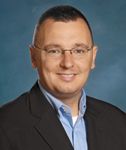
Going back to finish his degree after the major leagues, Haas landed a job during an Indiana University job fair, and headed to upstate New York as an Abbott sales rep. Since then, he's held a variety of sales and marketing roles during his 17 years at the company, culminating in his current position as divisional vice president, integrated managed care and policy.
If that sounds like a big job, it is. "I have the pleasure of working across public as well as private payers, large group practices in the United States, and then also our trade customers, which includes specialty pharmacy, wholesale, retail, and then I work closely with our colleagues in Washington DC and throughout the United States, relative to policy issues and regulatory issues." Haas says the job "doesn't lack for complexity," but he doesn't mind. "That's actually what I enjoy the most." Asked for his thoughts on healthcare reform, bundled payment models, ACOs, medical homes, and the like, Haas says it's precisely these new models that keep things interesting. "That's what makes my job fun, being able to work with those groups as they evolve, and think ahead of where they're at to figure out solutions that benefit everyone in the system, and most importantly, our patients."
With respect to patients, Haas says one of his most prized accomplishments is working on the design and introduction of a Medicare assistance program with Humira, one that was designed before Medicare Part D existed (Humira launched in 2003). Haas had a family friend with rheumatoid arthritis who had been taking a different therapy, but needed to try something else. The assistance program allowed "patients who didn't have a drug benefit, but were Medicare recipients, to actually access the product...for me that was a great experience."
Haas oversees a team of nearly 200 individuals, and says being an effective listener is critical, along with being an effective communicator. Right now, he's focused on "engaging my team to be proactive thinkers." Given the level of experience and expertise present on his team, Haas says the ability to think and then act—as simple as that sounds—is a "very powerful tool for us to be able to use, especially in a market environment that's moving as rapidly as this one is."
The combination of talent and expertise is an engine for good ideas, but with a larger team, how do managers stay the course? "That is a challenge for us," says Haas. But healthy debates around strategy—where to go, and just as importantly, where not to go—are part and parcel of the decision-making process. Haas's Monday morning staff meetings, held at 9 a.m., are an important forum for these debates. "We describe things as 'Monday morning ready,' are we Monday morning ready, are we set up in a path where all 183 of us know where we're headed and why we're headed there," says Haas. "I think for all of us, it's important to describe the 'why' behind what we've chosen to do, why we've chosen to do it and why we've chosen to de-prioritize other initiatives. This helps my team understand the strategic rationale, which facilitates organizational alignment and commitment."
Haas says the greatest joys in his life are his three kids and his wife, the latter of which has been at Abbott longer than he has. "She's got me by two months, so she's the elder statesman and the brains of the operation," says Haas. Tracie Haas began at Abbott in September of 1995; she's currently leading Abbott's endocrinology franchise. Both work at the Chicago office. Haas says his son is an avid Yankee's fan because his mother is from New York, and because it was a marriage requirement. "It was understood that I had to raise my kids Catholic and I had to be a Yankee fan, and I'm not sure it was actually in that order."
—Ben Comer
David Lowrance
Chief Financial Officer, Acucela Inc.
David Lowrance, CPA, who became CFO of the Seattle-based biopharma firm Acucela in April 2011, says that "doing his job well allows its scientists to do the most important work" of developing drugs to treat blinding eye diseases.

Lowrance's overall objective is to ensure that the firm remains fiscally healthy and also "to steer it in the right direction in the complex world of drug development...despite the long timelines and risks associated with it."
Beyond fiscal responsibilities, his position includes oversight of operating functions such as business development, IT, product launches, and alliance management. Acucela does not use the traditional venture capital model, he notes, but collaborates on its R&D programs.
Acucela's partner is Tokyo-based Otsuka. They are co-developing the firm's lead product, ACU-4429, which is in Phase II clinical trials for dry age-related macular degeneration (AMD). No currently approved treatment exists for this condition. Acucela is also developing ophthalmic drugs for glaucoma and dry eye.
He attributes his success, as he takes on increasingly more responsibilities, to his tenacious but positive approach, willingness to work side by side with team members, and honesty and integrity that help build his relationships with people.
His tenacity was clearly visible in his former CFO position at Cumberland Pharmaceuticals, when it launched an IPO around the same time that the US markets collapsed in 2007. The experience was to become one of the most challenging and rewarding in his career.
Instead of pulling back, Lowrance and other Cumberland officers persevered with their road shows, document updates, and other activities over the months that followed. Two years later, Cumberland completed an IPO worth $85 million, becoming one of only a handful of companies to complete an IPO in 2009.
His first position in pharmaceuticals was with Cumberland starting in 2003. Lowrance's prior experience with aerospace and automotive manufacturers had caught their attention, as he had the manufacturing experience needed to prepare for a product launch.
Lowrance began his career earlier as a CPA with a big four accounting firm.
He has seen many changes take place during his nearly 10 years in pharmaceuticals. The resources for R&D have become scarcer as blockbuster drugs come off patent. On the growth side, the aging population is creating the need for more drugs to treat chronic diseases.
For him, the key to good leadership is being able "to strike a balance between managing the fiscal pieces and understanding their role in helping drive the people part of the business."
Such balance, he notes, enables a firm to achieve process improvements, cost savings, and strengthened financial position as well as improved employee morale and productivity.
"I'm a big believer in the motivational importance of honesty and integrity," says Lowrance. "Communicating with the people here has not only allowed me to take on more responsibility—because I've been able to gain trust—but also to deliver with results; and my team delivers with results."
Lowrance communicates his vision for the organization so his people understand not only what the directive is, but also the reasoning behind it. "When you do that, they become motivated to do something, and they do it," he notes.
Lowrance contends that whether you are affecting change or leading people, your success depends on motivating them. His eighth grade English teacher defined motivation in a way that he has remembered for thirty years:
"[Motivation is] the stuff that permeates your entire being when you have a clear vivid picture in your mind of what you want to do and an intense burning, all-consuming desire in your heart to fight for it."
Among his personal challenges, how to strike a balance between personal life and the demands of the job is first and foremost. "If you allow yourself to become burned out at work, your decisions become less effective, and you lose out on your life with your family."
"If you flip it the other way, your work family suffers," he notes. Lowrance tries to change the nine-to-five work place to become part of people's lives. "You then have more invested in it and, therefore, are willing to do more to accomplish the goal."
In today's fast-paced environment, which has never been faster, "you have to make sure you're making a full investment in all aspects of your life."
—Ann Roberts Brice
Naina Bhasin, PhD
Vice President, Business Development, SciFluor Life Sciences, LLC
Naina Bhasin has climbed Mt. Kilimanjaro. But when she uses words like "motivation," "embarking on a new adventure," "passion," "challenge," and "quest," she's not outlining what it takes to get to the summit of a mountain that's 19,341 feet above sea level—she's talking about leading a team that focuses on adding fluorine to pharmaceuticals to increase their efficacy and safety, and to create radiotracers that enable PET imaging.

Bhasin took some time out of her African safaris, kettlebell instructing, and charity involvement to sit with Pharm Exec and explain the science behind what's going on at SciFluor Life Sciences, and what her role as vice president of business development entails.
Essentially, fluorine is an atom that SciFluor is adding to therapeutics during drug development in order to increase potency, enhance drug delivery to target, improve drug half-life resulting in less frequent dosing, or reduce drug side effects and interactions. Additionally, SciFluor is able to add the radioactive form of fluorine to compounds to enable tracking of the drug via Positron Emission Tomography (PET) imaging. PET imaging can lead to "new insights into a drug candidate's potential efficacy, safety, and optimal dosing strategies," according to a fact sheet on the SciFluor website. "These insights may result in shorter development times, improved clinical trial designs, and ultimately deliver more effective drugs to patients."
At SciFluor, Bhasin is responsible for identifying biopharma partners that are interested in working with the company as it utilizes its technology and expertise to harness the transformational power of fluorine to create new therapies.
Bhasin credits her entrepreneurial spirit and her ability to wear many hats at a moment's notice for her success not only at SciFluor, where she's been since the beginning of 2012, but for the successful roles and many opportunities that have led her to where she is today.
While enrolled at the University of North Carolina at Chapel Hill's graduate program in cell and developmental biology, Bhasin got involved with individuals who were starting a small company out of the UNC Eshelman School of Pharmacy. "I was writing my dissertation during the day, and in the middle of the night I would go help them isolate liver cells," she remembers. "That was my first exposure being part of a really small biotech startup. The great thing about being in a startup is that you get to wear lots of different hats—when you have a limited group of people, there's opportunity to learn many things and make significant impact." When the same small startup needed someone to develop relationships with physicians and surgeons, Bhasin was asked to forge those relationships. So—much like climbing a mountain—she climbed her way up in the industry one step at a time.
One small startup role led to another, and so on, until Bhasin found herself more on the business side of industry than the bench side. "In pretty short order, I was negotiating contracts, working with clinicians to get through the IRB process, and learning about informed consent and how to enroll patients in trials," she says. "And over time I realized, while I love being at the bench and the science is what drives me, I had other skill sets that could allow me to impact science in a broader way."
Bhasin emphasizes that being passionate and inquisitive are two traits that have been invaluable to her in her climb, along with the ability to appreciate and leverage the strengths of those around her. Being able to adapt as the industry changes, she says, is also key. "In times of transition, too much of what happens is, 'We're doing it this way because it's the way we've always done it.' and that mindset doesn't work." But Bhasin says that working at SciFluor, which was founded in 2011, is "an opportunity to re-evaluate how we can be more effective in creating drugs, and that requires some new thinking."
—Jennifer Ringler
Ryan Cohlhepp
Director, Drug Development Management, Millennium, the Takeda Oncology Company
An interest in health is ingrained in all aspects of Ryan Cohlhepp's life. Watching his father suffer through a heart attack and subsequent triple-bypass surgery at age 44 had a deep impact on Cohlhepp, and influenced his decision to work in a health-related field. He also carries a passion for health into his personal life, where he competes regularly in triathlons and is currently training for a half-Iron Man event. "As a naïve 17-year-old, I thought I was going to go to pharmacy school and, ultimately, go on from there into medical school," he says. Ultimately, though, he decided that pharma was a better fit, with a business focus and the opportunity to help patients.
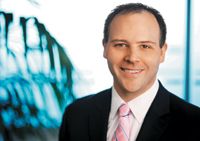
Cohlhepp did indeed receive his Doctorate of Pharmacy (PharmD), from Purdue University. But a leadership development program at Roche where he "slipped through the cracks" as one of the only associates without an MBA set the direction of Cohlhepp's career. He started in Roche in market research, and eventually transitioned to the field. "I thought there was a lot of value in getting out there, getting a perspective on what it's like to be face-to-face with the physicians and the customers," he recalls. From there, it was a job in US Marketing and Global Strategic Marketing for Roche, and eventually a jump to Takeda, which acquired Millennium—entirely focused on oncology development and commercialization—in 2008.
Cohlhepp is now director of drug development management at Millennium, where he's currently global team leader on the development side for a Phase III prostate cancer compound. When asked about the most important characteristics and leadership skills he uses every day, Cohlhepp immediately and naturally jumps into talk about the career mentors in his life who've made the biggest impact—Chris Schroll, who Cohlhepp reports to currently at Millennium, and Dennis Burns, who mentored him during his time at Roche. "When I came out of my PharmD program as a young 20-something, these busy executives were spending so much time with me, and even now, as I advance my career, I continue to have people around me who are willing to coach me and spend time with me," he says. "But it's not just their willingness to coach—both of them are also constantly in the learning process, and a key thing I've taken away is that you're never so far in your career that you're no longer a student."
When it comes to leading a team, "One of the absolute essentials is being able to build and establish a foundation of trust, and I think doing so is a valuable investment in time," Cohlhepp says. "And if you don't make that investment, you're going to pay for it in the end. Anytime you are dealing with a complex business like ours, you're bound to have curveballs. And a good leader is committed to proactively developing that trust, being open, being transparent, and making that investment prior to getting into difficult situations."
Cohlhepp hopes that going forward, the industry will continue to learn the finer points of the art of collaboration. "There are a lot of good companies and academic institutions out there doing great science in oncology. We're all looking to do the same thing—to find cures and extend cancer patients' lives," he says. "And to be able to leverage the work that we're doing with one another, rather than always competing—I really hope we figure out how to do that."
In terms of growing his own skill set in the future, Cohlhepp says, "I've seen leaders who've got such an astute sense of the business that it seems like it's natural for them to know when to put the foot on the accelerator versus when to put on the break, or even just slow down. Getting a greater sense of those business drivers and what makes the car react are definitely skills I'm looking forward to honing. Becoming one of those leaders who understands how to modify what your team is doing in a timely way is one of the traits that separates great leaders."
—Jennifer Ringler
Madalina Lucic
Global Marketing Director, Merck
Ambitious, versatile, and, not least, committed to new learning opportunities, Madalina Lucic can already boast of a career that has straddled cultural divides, overcome gender barriers, and moved across disciplines. A few years ago she returned to university to get a second degree in psychology, not in order to follow a new path but, in her words, to know more about herself and "to motivate and to understand people better." That's a modest statement from a woman who has already achieved a great deal by doing just that.

Beginning her career in the mid-90s as a sales rep at VALMEDICA in her native Romania, Lucic progressed to brand manager at Johnson & Johnson within a couple of years, and by 2000 was senior product manager at Schering-Plough. She became the company's business unit director in 2004 and for the next four years was involved in managing almost all of Schering Plough's products. She helped turned the company's hepatitis business around from a 10 percent market share to a 40 percent market share in just 18 months. Identified as a star talent, she was duly posted to a regional role in Central and Eastern Europe (CEE), and after the merger with Merck took up a Eastern Europe, Middle East, and Africa (EEMEA) position.
Those regional assignments were particularly character building. Being a woman in a senior position is a test of resolve and versatility not just in the Middle East but also in CEE, but for Lucic the opportunity to learn new skills was too tempting to resist. She succeeded by being "very flexible and able to listen and learn the specifics of the country and the culture, and the needs of the market." And, of course, by "being open-minded."
Back then pharma was more of a man's world generally, not just in markets like the Middle East. "Even five years ago," says Lucic, "I was one of the very few women in the management team." But now, she is happy to say, things have changed. "Within the company we now have leadership programs for women; we get a lot of attention." This isn't just specific to Merck, she notes. "Being involved with different pharma associations, I see more and more powerful women, in global and management positions."
As Merck's global marketing director, Lucic is now drawing on her skills and experiences to lead her team through different types of cultural challenges, not least those presented by the post-merger environment. "Becoming one culture is always a work in progress," she says. "But there has definitely been a change: things are more action oriented; we explore more geographies and try to be present in the regions where we can provide more access to drugs for people in need." Lucic works hard to gain her team's trust; she believes in empowering people and giving them confidence to thrive in this new, action-oriented culture. And while, at the company level, "flexibility, autonomy, and a local mindset is vital" to succeed in new markets, "it all comes back to people and execution," she says.
Lucic isn't one to stand still for long, although in her current role, she says, she is still "in a learning phase." It's just over a year since she was involved in the launch of Merck's hepatitis C treatment [Victrelis] and she wants to explore "how we can provide better access and make a meaningful difference in the lives of people living with chronic hepatitis C." She's also interested to learn more about business development.
At the same time, Lucic does have her eye on the next step. Eventually she would like to be a country manager. "I couldn't say anywhere in the world, because in some countries you need to be local to be accepted, and in others, such as the Middle East, it would be difficult to be a country manager as a woman," she says, once again with a heavy dose of modesty—she has, after all, already proved herself in some of these regions. But, she adds (this time with some well-earned confidence), "I would be open to offers and I'm sure opportunities will come."
—Julian Upton
Peter Dannenfelser
Director, Pharmaceutical Digital Marketing North America, Johnson & Johnson
Pete Dannenfelser didn't get to where he is today through the traditional channels. He was never a sales rep or marketing manager. In fact, non-traditional marketing channels—an expertise in digital technology and media—have gotten Dannenfelser to his current position. That expertise, plus a unique ability to interpret and collaborate across company divisions, may also take him even further.

"One of my career goals is to bring a digital/new media position to the C-suite, and I see that as a real opportunity in the coming years," says Dannenfelser. "In the same way I've seen other business critical functions have a seat at pharma's leadership tables across the industry, so should digital. To make that happen, my aspiration is to continue advocating for innovation and working to advance the kind of programming that can prove digital is a core strategic driver of both business and brand strategy."
A tech nerd from the outset, Dannenfelser has always chased the latest and greatest in new technology. "An iPhone can't come out that I don't buy within the first week," he says. In his twenties, Dannenfelser (who is 41) was looking for work in digital on the development side, and scored a gig with J&J's Ortho-McNeil as a contractor, but quickly moved into a strategic role. It was there that Dannenfelser had an epiphany that still informs his thinking today. Tasked with integrating website-generated e-mail inquires into a call center, it "became clear to me that we were receiving customer insights constantly through the phone and through e-mail that weren't necessarily being shared with the market research group." His perch in the digital space provided "insight and a view into other parts of the organization, where silos still exist, and I was able to bring them together. We could suddenly react—from a market research assessment—to the type of customer insights we were receiving through the call centers."
It was at Ortho-McNeil (now a part of J&J's Janssen Pharmaceuticals) where Dannenfelser was first "bitten by the marketing bug," and also where he met another digital champion, Marc Monseau, who helped develop the company's social media policy and strategy for over a decade, up until May of last year. "Pete and I started at J&J at about the same time, and even then you could see that he was not only someone who had a passion and deep knowledge of all things digital, but that he was someone who could get things done," says Monseau. "Pete takes complex, innovative approaches to digital marketing and makes them work for the pharmaceuticals industry, all with a calm, measured attitude."
The importance of a calm and measured attitude should not be underestimated in the corporate world, and Dannenfelser says he "works to live," not vice versa. Adds Monseau: "He plays a mean bass guitar." Oh yeah? "I play bass in a band on the weekends," says Dannenfelser. "I allow for the things that are important outside of work, and that way when I'm in the office I can give that additional effort that's required."
Dannenfelser says he's as guilty as everyone else of the occasional midnight e-mail or the Sunday afternoon Powerpoint presentation, but "the most important thing to me is my family." Dannenfelser has a two-and-a-half year old, and a second child on the way. In keeping with the modern career path, Dannenfelser didn't stay at Ortho despite his early success there. He has worked for Novartis as, among other titles, director of new channel development, and has also spent time on the agency side, first with the Cadient Group and then at Targetbase, with a stint at Forest Labs in between, as senior director of marketing communications. Finally, though, he came back to where he started. "I had always said that if Johnson & Johnson called back, I would come back, and about eight months ago I was given that opportunity."
As head of Janssen Pharmaceuticals' digital center of excellence, Dannenfelser says senior leadership at the company is committed to digital, which makes his life easier. But the technology is in a constant state of flux, which requires flexibility and the interpretive skills to bring people on board. "In order to maintain our leadership role, we need to regularly embrace the change that comes ahead of it."
—Ben Comer
Daniel Seewald
Team Leader, Smoking Cessation & Neuroscience, Pfizer
Dan Seewald has not only worked his way up but also across several functional areas during his 15 years in pharmaceuticals in paving the way for his current position as head marketer for Pfizer's Chantix.
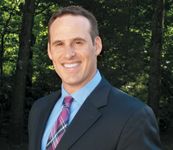
At Pfizer, he leads a group of internal consultants responsible for the global success of its smoking cessation product, Chantix, known outside the United States as Champix.
A CPA, Seewald progressed in the industry through various company positions that ranged from financial auditor to market research to global product director—and now global team leader for a major brand.
Seewald describes himself as a "left and right brain thinker" who is adept at both the creative and the analytic. Early on in his career, as CPA and auditor, he used analytic skills, but then gradually transitioned to positions that focus on innovation.
"To be successful, you have to play the different roles," says Seewald, noting that he aspires to "use his passion to make a difference in the evolving world of healthcare."
At Pfizer, Seewald and his NYC-based team drive the success of various local and regional teams spread across the developed and emerging markets. He acts as a "touchstone" between them and headquarters, he says, sometimes advising about the commercial implications of new clinical studies.
He interfaces with the medical, regulatory, and legal functions; he partners with the regions and the local markets to help spread best practices; and he becomes directly involved when a market wants to partner.
Last December, an emerging market team in Eastern Europe agreed to pilot a headquarters-developed quit-smoking program, which was then customized by regional and local teams. The program used a gift-giving concept to encourage friends and families to provide emotional and financial support in a smoker's quit attempt.
In second quarter, the initiative and the teams received a Pfizer Worldwide innovation award. "The novel aspect was not necessarily the idea but the collaboration between the local and global marketing teams," notes Seewald. "Without each person, the idea would never have won the award." The program's success demonstrated that "friends and family can be activated as a meaningful influencing channel and payer network," notes Seewald.
Seewald developed a sense of compassion for smokers, after commiserating with them standing in front of city buildings, as he came to realize that "it's a dependency...an addiction...that for so many people is as hard to break as heroin."
Pfizer makes products and finds healthcare solutions for people, says Seewald. "If you don't care, you're not going to be a good marketer. It's all about creating messages. If you care first, you'll become curious and find the answers."
He finds his experience as a part-time wrestling coach during his academic years to be of particular value in developing the potential of his subordinates and the matrix of individuals in his sphere of influence.
"There's an invaluable lesson about leading without having authority. Sometimes you have authority to coach; sometimes you don't. You have to help enable people in a positive way. You can't always be the doer."
While at Roche in 2006, Seewald won an innovation award for a program involving the antiviral Tamiflu. The award-winning endeavor transformed the way that organizations stockpile antiviral medications based on a model used in the buying and selling of futures options.
A few key career moves allowed Seewald to leap across traditional boundaries to the strategic marketing job he holds today, starting with Bristol-Myers Squibb, when he moved from CPA to process reengineering in 1998.
At Pharmacia, he moved from process reengineering to global business research in 2001; and at Roche, he made the important transition from market research to brand management in 2006.
As to trends, many companies are using an integrated approach that looks to solve a problem rather than just sell a drug, he adds. For example, with smoking cessation: "It's about selling a solution to help people quit smoking and remain smoke-free. It involves behavior modification."
To succeed, one requires the ability to constantly innovate, to take ideas and make them better. "But it's not throwing the baby out with the bath water."
He attributes his successes to his ability "to constantly reinvent oneself and to be adaptable. The moment that you stop evolving, learning to improve yourself, you cease to be someone who excels at what you do."
His greatest personal challenge has been to ignore those who questioned why a successful CPA would want to make a career change to marketing. "You know when you know yourself. It [the transition] took courage but it paid off. I like what I do. I enjoy the people that I'm around."
—Ann Roberts Brice
Shannon Thyme Klinger
VP of Legal and Intellectual Property, and North American General Counsel, Sandoz Inc.
Some might say Shannon Klinger's path was set in stone before she was even born. "My grandfather was a lawyer," she says. "I remember when I was a child, sitting in his office with all of his old and dusty law books, thinking that being a lawyer must be a really interesting job because you get to read a lot." This experience, along with her father's career as a physical therapist, influenced Klinger's college coursework. She studied psychology, and thought long and hard about whether to go to law school or med school. But fate stepped in and helped make that decision easier: "I discovered during a volunteer stint at a local hospital that when I saw other people's blood it made me want to pass out—and sometimes I did," she remembers. So—law school it was.
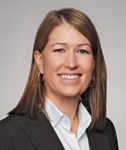
A litigator by trade with a focus on complex healthcare matters, Klinger made partner with the law firm of Alston & Bird, and while she was there, had an opportunity to do some work for Barr Pharmaceuticals (since bought by Teva). This eventually led to in-house work as VP of Compliance at Barr. "It was a risk because once you're a partner in a law firm, you have a set career path. And doing anything other than continuing to build your practice and generate business takes you outside of your comfort zone."
Next was a stint at Solvay Pharmaceuticals, which was later bought by Abbott. Finally, in March 2011, Klinger landed at Sandoz Inc., the US subsidiary of Sandoz, part of the Novartis Group, where she is now VP of Legal and Intellectual Property, and General Counsel of North America. Sandoz, a generic pharmaceuticals manufacturer, offers a unique environment for Klinger to lead a team she's proud of, with legal, IP, regulatory affairs, and government affairs reporting to her. "What's important is making a difference in the teams I manage," she says. "It's important that every day, every week, every month, every year, the people who work with me get better; they hold me accountable to make them better. We're constantly talking about career paths and their own journeys. And I think that in the fast-paced pharmaceutical environment, in many legal and IP departments in particular, those kinds of conversations aren't happening."
Looking back over the past 10 years, Klinger notes that mergers and consolidation are an increasingly larger part of the reality in pharma. "It's not just about how we can more creatively address the legal challenges of our organization," she says. "It's about how we can use legal innovation to generate actual revenue and return for the organization. Whether this comes in the form of strategic litigation settlements, or actively seeking IP protection for generic product development, or acute attention to risk mitigation strategies, thinking outside the box is critical if you want to be a best-in-class function."
"In the past 10 or 15 years, it's become critically important as a lawyer and a leader not just to demonstrate functional excellence, but to be strong in the strategic understanding of your business, to leverage that understanding to establish a concrete value proposition for each of the functions that you manage, and to deliver year-over-year excellent ROI," Klinger continues. "And for me, that's what makes being in our industry a lot of fun, because it means that I have to have the business acumen and the strategic focus, and day by day what I do changes constantly because I'm in an incredibly dynamic environment."
Ultimately, Klinger's destiny is something that's tied to both her personal and her professional life. "People ask, 'What do you want to be remembered for?' For me it's not about being a lawyer or a general counsel or even a strategic business partner—whether it's interactions with friends and family, the causes I choose to pursue, or the way I approach every day in the office, I want to make a difference," she says. "I'm fortunate to work for a company that not only generates good return to our shareholders—but whose mission is to make the lives of patients better. And when you're having a bad day, that's a pretty easy mission around which to rally."
—Jennifer Ringler
Georg Toufar
Chief Marketing Officer and Board Director, Mundipharma International Limited
Not many execs make the move from chocolate to innovative medicines but Georg Toufar is proud to say he has done just that. His first job was with Mars, persuading the hot dog vendors of Vienna to sell perishable confectionery at their stalls. He proved so good at that he rapidly rose to "one of the most prestigious positions in the Mars portfolio"—Marketing Manager for Chocolate at the company's UK office. Before long he was receiving unsolicited calls from headhunters, one of which, in 2003, brought him into the pharma realm. The then-CEO, Pharmaceuticals Division, Novartis AG, Thomas Ebeling, wanted some fresh blood with consumer marketing expertise; Toufar was duly installed as go-to-launch leader in the United Kingdom for Novartis's new hypertension treatment, Co-Diovan.
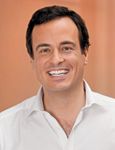
This career leap was not as unusual as it may sound. Toufar had been sizing up the pharma industry, sensing it "would undergo changes not too dissimilar from what consumer goods went through in the 1990s"—namely, a slowdown of growth, an increase in competition, and the rise of "own labels"—in pharma's case, generics. The challenge, as far as Toufar saw, was "to reach target customers with an ever smarter marketing mix."
Co-Diovan presented this and other obstacles, not least because of skepticism among some UK-educated doctors about fixed dose combinations. So Toufar focused his sales efforts largely on doctors educated outside the United Kingdom, and Co-Diovan became one of Novartis's most successful launches for a decade. By then, Toufar had definitely "caught the pharma bug."
By 2005, Toufar was Novartis's European franchise director for Dyslipidaemia; the following year he became the company's head of marketing & sales, northern & central Europe. In 2008 he joined Mundipharma International as director, European marketing & sales, and was promoted to chief marketing officer and board director just last month.
But he hasn't forgotten his career roots. "At Mars, the customer is center stage," Toufar explains. "And it's a very flat organization: just a few people, but with big responsibilities. Not a lot of hierarchy. It's not run by staffers, so things can move incredibly fast. A bit like a biotech."
This is the kind of culture he has been instilling at Mundipharma, which is based on the philosophy of pharma sans frontieres—pharma without borders—and is driven forward by the company's high percentage of Generation X-ers. "There are no old-school, Baby Boomer attitudes here," he adds. "We understand that technology and the ways we reach customers have changed, that if we cannot tell our story to a payer in 30 seconds, then it's probably not a good story."
For Toufar, much of the rest of the industry "is still on the psychiatrist's couch." He explains: "I was at the Economist Pharma Summit this year and it felt like 'Groundhog Day'—a lot of the talks used exactly the same script you would have heard a couple of years ago: 'My payer doesn't understand me,' etc. But the industry is changing. Just bringing out slightly improved products and expecting a premium price is not going to wash. The solution is not about ever-smarter black box models that payers often struggle to decipher, but about honest, easy-to-understand propositions."
With that philosophy as a driving force, Toufar has overseen the expansion of the Mundipharma portfolio, supplementing its analgesics business with treatments across respiratory, rheumatology, and oncology, "reinventing the way we finance research, partnerships, and marketing strategies." The three product launches he has been behind—Targin, a follow-on pain treatment; Lodotra, for rheumatoid arthritis; and flutiform, for persistent asthma—have helped to drive the company's staggering recent success, achieving double-digit growth over the last five years. Mundipharma, Toufar points out, is now "on the way to becoming one of the top 25 pharma companies in Europe, with one of the youngest portfolios."
Indeed, dealing with such "hyper-growth," as Toufar describes it, can be challenging in itself. "We used to be a one-product, northern European company; now we're a pan-European portfolio company—that is scary enough." he says. But he embraces challenges. "Being able to pilot a new way of operating that is leaner, faster, more honest, more fun—for me, that's really exciting," he says. "The moment we start to ossify, that's the moment I will leave!"
—Julian Upton
Michaela Kneissel
Director/Novartis Leading Scientist of Bone Metabolism Research, Musculoskeletal Disease Area, Novartis Institutes for BioMedical Research
Although she is keen to point out the similarities between her previous career and the life sciences, Michaela Kneissel, PhD, admits with a smile, "Yes, it's true, I used to literally dig up my research material in the form of prehistoric skeletal remains." Her somewhat unorthodox move from an academic background in physical anthropology to the daily demands of Big Pharma was in part a serendipitous one. On her way back to the University of Vienna from a post-doc in the United States she made "by chance, what I thought would be a one-year stop at Sandoz to establish an imaging technique in a bone research lab," she explains. "Then I got intrigued by applied science and decided to stay on."

She quickly knew she had made the right decision. "What I liked about industry was the fact that experts from so many different fields could bring their skills to the table. It means you can address much bigger scientific questions than you can in small- or medium-sized academic groups," she says. "I also appreciated the applied aspect that one is not confined to reporting and integrating findings in a publication, but can create something novel in the form of a useful drug."
Sixteen years on, Kneissel isn't very likely to return to physical anthropology anytime soon. As the director of the bone research group in the musculoskeletal diseases research area at Novartis Institutes for Biomedical Research, the bones she now works with are far from prehistoric. And the research is no longer limited to bones. Under her direction, the group is pursuing regenerative drug discovery for adjacent tendons, and she has been responsible for shifting the research strategy beyond an exclusive focus on the osteoporosis population to other bone and mineral metabolism-related disorders with high unmet medical need. She has also steered Novartis's pioneering work on aspects of osteocyte and WNT pathway biology, highlighting the targeting of these cells and pathway as a potentially powerful way to increase bone mass and strength in conditions of bone fragility.
"Industrial science is much more team oriented than academic science," Kneissel explains. "It's not so hierarchical and much broader across functions and disciplines." But her attachment to academia is still strong, and, in this era of "lean," somewhat vital. "Today you have to reach out more to collaborate, both within the organization and outside with academia," she explains. "I have good connections; it's very useful to have this international academic context." She adds: "The way we collaborate is really very simple: in part it is through shared post-docs, and in part through small projects that benefit academia in terms of publications and us in terms of novel insights."
Kneissel still values the insights her academic background afforded her. "Physical anthropology is a highly observational science, which I think prepared me well for any form of life science," she says. Her leadership strategy is also highly sympathetic to new recruits joining from academia. She aspires to foster a collaborative spirit, through what she calls a "primus inter pares" approach, where she lays out strategic direction and provides a framework for the group to develop ideas together, creating a nurturing environment that encourages team members to grow and speak their minds. "It's important to support those who are at the beginning of their careers, such as young lab heads in the group and post-docs because the next generation should be included in any long-term vision," she says.
Kneissel isn't proactively planning sharp career turns in the immediate future. "I am happy with the freedom I have to build strategy within my area," she says. "In fact as a scientist, I would never view myself as having a job; I think it's a privilege." But she expresses an interest in helping to shape the business on a more global level, going beyond bone and tendon health.
As she has already made the quantum leap from prehistoric skeletons to 21st century medicine, this move shouldn't be too taxing for her.
—Julian Upton
Avinash Potnis
CEO and Country President, Novartis Malaysia
Avinash Potnis, whose career began in animal health and expanded to include pharmaceuticals in 2005, attributes his successes to a philosophical outlook instilled in him during his childhood in India.

"Life is a set of, let's say, marbles," commented Avinash in explaining his outlook. "Every four black marbles will be followed by one white marble, that is, every four challenges will be followed by an opportunity at every turn."
Avinash applies this rule in his daily activities whether he is filling a staff position, or motivating a subordinate or himself in the face of a difficult challenge. "To find solutions," he notes, "I get more and more opinions to find that one white marble. That gives me control of the situation. Probably, that made me an entrepreneur."
Avinash became CEO of Novartis Malaysia in 2010. During his tenure in that position, Malaysia, the largest country in the region, has experienced large sales increases at ever-faster growth rates.
The most compelling aspect of his job, he says, is reaching outside his office to external stakeholders (i.e., patients, doctors, buyers, and officials in the Ministries of Health and of Finance).
Avinash feels that his greatest achievement is the company's "newly-defined identity" in the minds of patients and customers. It has improved the ability of Novartis to cooperate with the Ministry of Health in addressing major public health needs.
A new cross-divisional approach was the change agent in evolving the company's identity, as on an operational level, it merged pharmaceuticals with animal health, diagnostics, oncology, eye care, and other healthcare product units.
The approach helped to accelerate growth by providing "integrated solutions for customers through cooperation with multiple stakeholders, de-layering leading to faster decision-making, efficient integration of divisional back office, and greater ability to attract, develop, and retain talent."
Avinash received his grounding in the cross-divisional approach after being selected in 2008 to expand Novartis' business in Vietnam. His previous career had provided invaluable experience both in managing the sales and distribution of exports for a firm in India, and later in heading up Sandoz distributor markets in Thailand for three years.
However, the new endeavor was an "almost insurmountable challenge," which he faced virtually alone, putting to the test his philosophy of getting one opportunity in every five challenges. It was to become the most formidable experience of his career.
When he landed in Vietnam, the new language, environment, and healthcare structure were all challenges to be overcome. "I didn't follow anyone; I did it by myself. The pharmaceuticals division was set up; the other divisions had a fragmented presence or no presence at all."
He sifted through many people on the existing team and from outside for over six months until finding the right ones "who believed in what I was thinking and doing; and then we formed a task force and we never looked back."
"Had I not been living with this philosophy, to keep finding opportunities, keep finding the right person...I might have failed."
Avinash sees the industry as having changed significantly over the past 20 years. In the early 1990s, chronic disease care was important but not at the forefront as it is now. Things have evolved from an antibiotic portfolio taken for only five days to a portfolio including anti-diabetic medications in which patients treat the condition over their entire lives, Avinash commented.
The cost of treating so many people makes patient access to medications a big concern, particularly in countries where healthcare is paid for by the government. In the United States and Europe as well as emerging markets, companies' future discussions with payers are likely to be centered on cost.
As country president, Avinash tries to introduce people on his team to their own hidden value. "It is a time-consuming process to convince a person that he has strength in himself that can bring benefit beyond him to the team," he notes.
Avinash believes further that someone's flexibility and attitude matter more than their experience and knowledge. In his organization, employees are rated on performance and also on values and behaviors, such as trust, openness, and candidness with patients and customers.
Of change, he believes that "the difficult thing is changing people; the easy part is changing business structure or making a business impact."
His words of advice to others that he himself tries to follow: "Never give up; be a student of the situation; and learn all the time."
—Ann Roberts Brice
Jose Trevejo MD, PhD
Medical Director and Clinical Disease Area Lead for Infectious Diseases, Vertex Pharmaceuticals
If you ask most people what playing basketball and being an up-and-comer at a biotech company have in common, you're likely to get quite a few blank stares. But Jose Trevejo, clinical director of infectious disease and novel therapeutics at Vertex Pharmaceuticals, sees a clear parallel in the frame of mind involved.
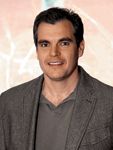
"I used to play basketball a lot, and you have to work with other people there, and I've always enjoyed that collaborative aspect," he says. "Everyone talks about being a team player, but I really feel that I'm more stimulated when I'm in a team environment. I think a lot of people can play as a team, but actually having it enhance your creative ability is something different."
With an MD and PhD from Cornell and a career-long love affair with studying infectious diseases, Trevejo has come to appreciate the collaborative nature of the pharmaceutical industry. "Research and even clinical medicine can be kind of lonely at times," he says. "You're spending lots of time in the lab, or writing grants. And the thing I really like about the life sciences is that you're constantly interacting with people, trying to find the best way forward, and you rise and fall together." At Vertex, Trevejo has been an integral part of the success of the team for the past two years, focusing on developing a new medicine for influenza, last year launching the first-of-its-kind protease inhibitor for hepatitis C, and launching a new medicine for cystic fibrosis earlier this year.
Part of being a true team player and a leader in pharma, says Trevejo, is trust. "I trust myself, certainly, but I also realize that other people have strengths that can complement my own," he says—much like on a basketball team. "I think we all naturally tend to think, 'There's something special about what I do and how I approach it.' You almost have to go around acting that way, otherwise you'll always be doubting yourself. But at the same time, you need to realize that other people are really good at what they do too, and respect their role."
Just as important as leading—and trusting—your team on the job, says Trevejo, is passing on the skills you've acquired to help build NBA-worthy players for the future of industry. As a resident, Trevejo spent time helping to educate and mentor minorities and increasing diversity in the workplace, with a special interest in ethnic under-represented minorities and women in science. In med school, he participated in a summer program that held classes and mentoring opportunities for under-represented outstanding students. Trevejo continues his mentoring work at Vertex today. "I've been really fortunate in that Vertex has a strong belief in diversity in the workforce, and our new CEO and our head of HR have been very supportive," he says. "We're running a learning lab here so we can mentor and teach local high school students about science."
Reflecting on how healthcare and pharma have changed since his residency days, Trevejo points out that both industries are increasingly data-driven. "It used to be only the experts in the field who really understood the landscape and could pick through the data and understand it," he remembers. "But what the information age has given us is that now data is more accessible by patients as well as physicians." This data-driven environment has not only led to more empowered patients, but more pressure on pharma to deliver optimal medicines and results, he says. "Today, patients—especially patients who are very involved with their treatments for a chronic or debilitating disease—have access to information almost in real time. They even know what the pipeline is. This forces you to really think strongly about coming out with the best in class."
—Jennifer Ringler
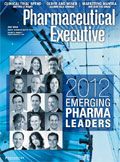
Regeneron, Roche Launch Major US Expansion Plans to Meet Growing Demand for Biologics and Innovation
April 22nd 2025With combined investments exceeding $53 billion, both companies are deepening their US presence through expanded biologics production, gene therapy capabilities, and next generation R&D centers.
Cell and Gene Therapy Check-in 2024
January 18th 2024Fran Gregory, VP of Emerging Therapies, Cardinal Health discusses her career, how both CAR-T therapies and personalization have been gaining momentum and what kind of progress we expect to see from them, some of the biggest hurdles facing their section of the industry, the importance of patient advocacy and so much more.
Applying Porter’s Five Forces to Portfolio Management in Pharmaceutical R&D: A Strategic Roadmap
March 17th 2025The increasing costs and complexity of R&D in the pharmaceutical industry have necessitated the adoption of strategic portfolio management to optimize resource allocation and enhance competitive advantage.